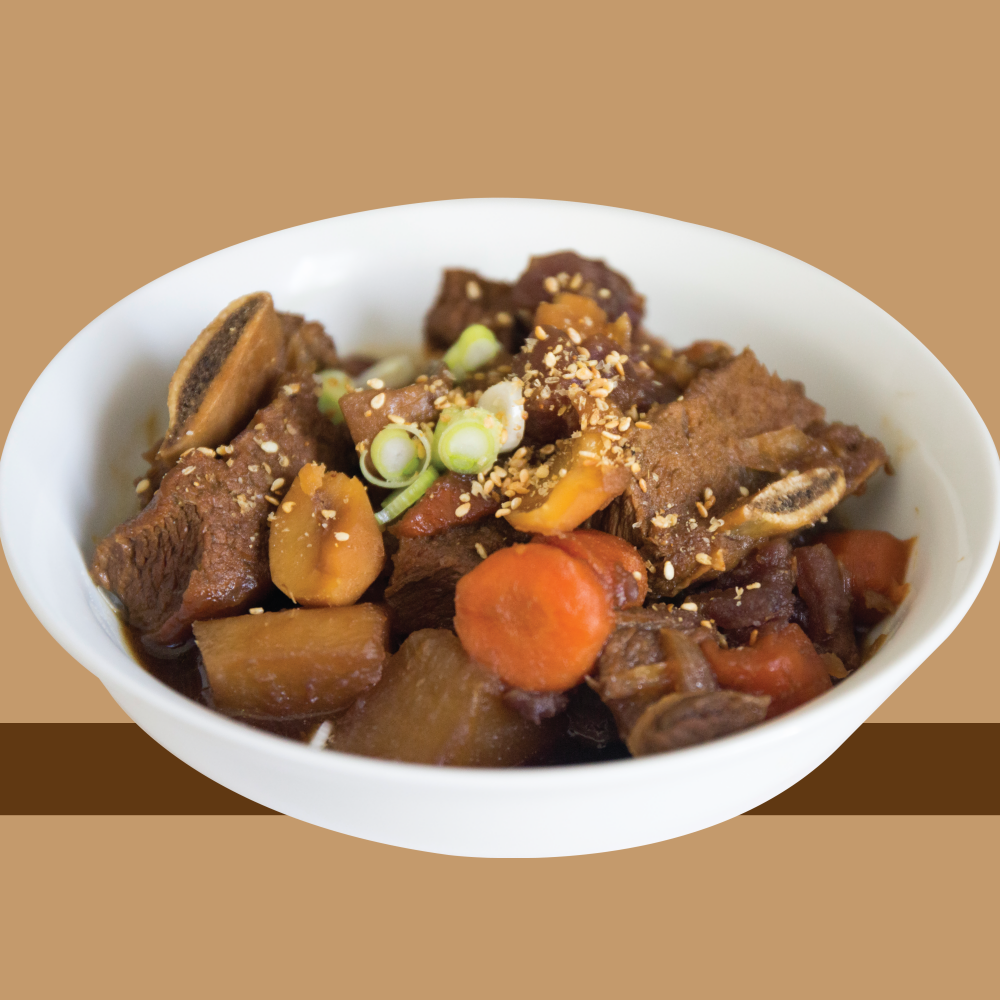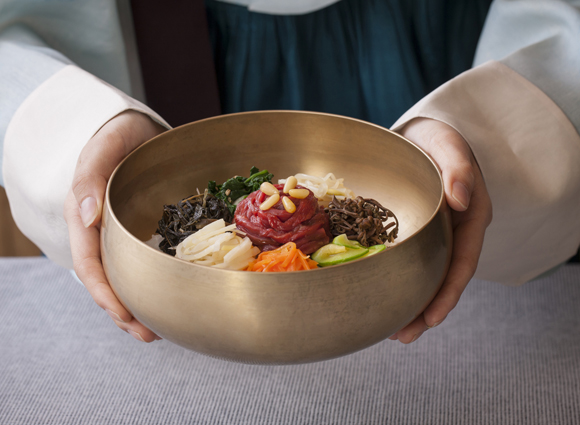
Special Day with GalbiJjim
Galbijjim is often considered a special dish associated with holidays, celebrations, and important occasions in Korea. While it can certainly be enjoyed year-round, it is commonly featured during festive times and gatherings due to its flavorful and indulgent nature. Here are a few reasons why Galbi Jjim is often considered a holiday food:
- Labor-Intensive Preparation: GalbiJjim requires marinating the beef, preparing the vegetables, and slow-cooking the dish for several hours. Because of its time-consuming preparation, it’s often reserved for occasions when families or groups come together and have more time to dedicate to cooking.
- High-Quality Ingredients: GalbiJjim is traditionally made using high-quality beef short ribs and a variety of vegetables. The use of quality ingredients makes it a special treat that’s often enjoyed during celebrations.
- Flavor and Presentation: The rich and savory flavors of GalbiJjim, along with its beautifully braised short ribs and vibrant vegetables, make it visually appealing and a delightful centerpiece for special meals.
- Symbolism of Sharing: Korean holidays and gatherings emphasize the importance of sharing and togetherness. GalbiJjim, with its large portion size and communal serving style, is well-suited for these occasions.
- Tradition and Nostalgia: GalbiJjim is a dish with cultural significance, and many people associate it with fond memories of family gatherings, special occasions, and the warmth of home.
While GalbiJjim is often enjoyed during holidays such as Lunar New Year (Seollal) and Korean Thanksgiving (Chuseok), it’s not limited to these times. Some restaurants specialize in Galbi Jjim and offer it year-round, allowing people to enjoy this delicious dish whenever they like.
Cooking Method
GalbiJjim (갈비찜) is a traditional Korean dish that consists of braised short ribs, often referred to as beef short rib stew or braised beef ribs. It’s a hearty and flavorful dish that features tender and succulent pieces of marinated beef short ribs, slow-cooked with various vegetables and a rich, savory sauce.
The dish is often associated with special occasions, celebrations, and family gatherings due to its labor-intensive preparation and the use of high-quality ingredients. Galbi Jjim is known for its complex flavors and tender texture, making it a favorite among those who enjoy Korean cuisine.
Here’s a general overview of how Galbi Jjim is prepared:
Ingredients:
- Beef short ribs (galbi)
- Vegetables (such as carrots, potatoes, onions, and chestnuts)
- Korean radish (mu) or daikon radish
- Garlic cloves
- Ginger
- Soy sauce
- Sugar
- Mirin (rice wine)
- Sesame oil
- Sesame seeds
- Optional: dried jujubes (Korean red dates), ginkgo nuts, pine nuts
Instructions:
- Marinate the Beef:
- Marinate the beef short ribs in a mixture of soy sauce, sugar, minced garlic, minced ginger, and sesame oil for a few hours or overnight. This step imparts flavor and tenderness to the meat.
- Prepare the Vegetables:
- Peel and cut the Korean radish or daikon radish into chunks.
- Peel and cut the other vegetables into bite-sized pieces.
- Braise the Ingredients:
- In a large pot or braising pan, layer the marinated beef, vegetables, and optional ingredients like dried jujubes, ginkgo nuts, or pine nuts.
- Add water, soy sauce, mirin, and sugar to the pot, creating a flavorful braising liquid.
- Slow Cooking:
- Cover the pot and bring the liquid to a boil. Then, reduce the heat to a simmer and cook the dish for a couple of hours. The slow cooking process allows the meat to become tender and absorb the flavors of the sauce.
- Serve:
- Once the beef is tender and the vegetables are cooked, the Galbi Jjim is ready to be served.
- Garnish the dish with sesame seeds and chopped green onions.
Kinds of Galbijjim
- Beef Galbi Jjim: This is the most common type of Galbi Jjim and is made with beef short ribs. The ribs are marinated and braised in a rich and savory sauce until they become tender and flavorful. Vegetables like carrots, potatoes, onions, and mushrooms are often added to the braising liquid to enhance the taste.
- Pork Galbi Jjim: While beef is more common, pork Galbi Jjim is also popular. Pork ribs are marinated and braised in a similar manner to beef Galbi Jjim. The sauce and seasonings might be adjusted slightly to complement the pork.
- Seafood Galbi Jjim: This variation includes seafood like shrimp, squid, and mussels along with the meat. The seafood is added to the braise to infuse its flavors into the dish.
- Spicy Galbi Jjim: Some versions of Galbi Jjim include a spicy element, often using Korean red pepper paste (gochujang) or red pepper flakes. This adds a bit of heat and depth to the dish’s flavor profile.
- Chestnut Galbi Jjim: Chestnuts are sometimes added to the braising liquid, providing a unique texture and a touch of sweetness to the dish.
- Mushroom Galbi Jjim: If you’re a fan of mushrooms, you might find versions of Galbi Jjim that heavily feature various types of mushrooms in the dish.
- Galbitang: This is a soup version of Galbi Jjim. The short ribs are simmered in a clear broth along with vegetables and often served as a soup rather than a stew.

Best Galbijjim in Seoul
Place name : Gangnam Myeonok
Address : 34, Nonhyeon-ro 152-gil, Gangnam-gu, Seoul 06026, South Korea






